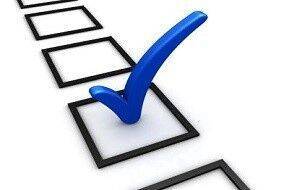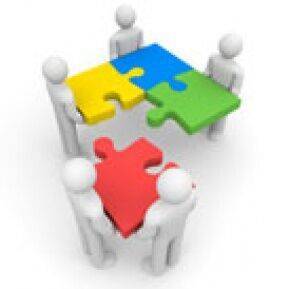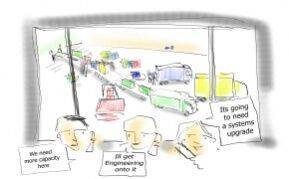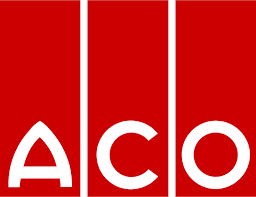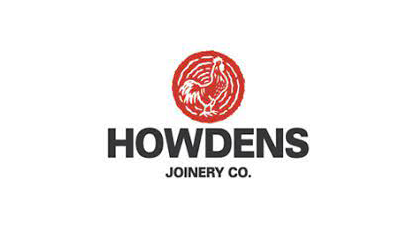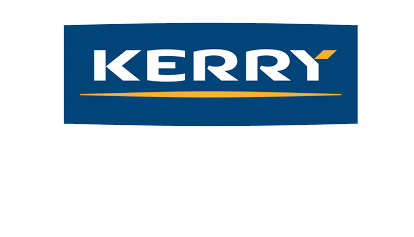Resources

This section contains articles and topics of interest to those meeting the challenge of improving performance in Manufacturing and Process Industries.
That includes guidance to site resources on the topics of Taming Technology, Ratcheting Up Performance, Delivering Better Projects Faster and Digital CI.
Locking in Performance Gains
- Details
- Category: Resources
For assets that have achieved stable operation by establishing basic conditions, the next step involves locking in the gains by investing time to prevent the causes of recurring problems.
That includes the reduction of accelerated deterioration which is a significant factor in component failures. This can be due to, for example, contamination or scattering of dust and dirt or skill and knowledge gaps due to:
Workplace Learning and Engagement
- Details
- Category: Resources
We forget about 75% of what we have learned if it is not applied within 6 days so practical application is an essential part of successful skill development.
Workplace Learning blends training with practical projects in a way that helps adults to build on existing knowledge. Workplace Learning also involves team based activities to activate peer learning (If people want to know something the first thing they do is to ask a colleague).
The outcome is accelerated adult learning, increased engagement with new ideas and the delivery of added value gains such as improved reliability, flexibility and problem prevention.
So how can we make best use of that process?
Lean TPM Roadmap: Ratcheting Up Performance
- Details
- Category: Resources
Ratcheting Up Performance covers the second part of the journey to industry leading performance. The first part of the journey "Taming Technology for Good" deals with the causes of recurring problems.
This step concerns the use of Focussed Improvement tactics to define a realistic and achievable improvement glide path and mobilise actions to progress along it. The gains include improved process consistency, reduced defects and energy costs.
Developing Manufacturing Leader Improvement Skills
- Details
- Category: Resources
The Manufacturing Leader role involves problem solving to meet today's deadlines whilst simultaneously driving actions to improve future performance.
To do that well requires a sound understanding of:
- The causes of unplanned downtime, lost performance and quality defects,
- How to recognise and reduce accelerated wear,
- How to engage their team in activities to surface and prevent mis operation and wasted effort,
- How to turn a Plan, Do, Check Action cycle as part of the work routine.
The Learning Goals below set out a learning plan for Manufacturing Leader Core, Intermediate and Advanced skill levels to support their development.
The Improvement Leader Network
- Details
- Category: Resources
At the heart of any practical improvement process is a network of improvement leaders such as Business Sponsors, Change Agents, Front Line Leaders and Improvement specialists.
Developing the capability of those involved will only accelerate the pace of progress and establish role models for others to follow.
How can that be done?
The Digital LeanTPM Blueprint
- Details
- Category: Resources
The Digital CI Blueprint expands the scope of Operational Excellence tools like Lean and TPM to include the selection and use of data, analysis and model development to drive out waste and enhance real time added value. An approach based on the lessons learned by well known and award winning organisations who have achieved step up gains from the delivery of advanced technology.
The approach was developed to overcome the traditional IT systems approach which results in the creation of personal spreadsheets and work arounds to manage day to day decision making.
The outcome is an information fog with multiple versions of the truth that reinforce wasteful silo management and finger pointing.
The creation of a Digital CI blueprint to systematically "Close the Loop" between the physical and digital worlds removes legacy barriers to best practice and speeds up decision making.
Deliver Better Projects Faster
- Details
- Category: Resources
Most managers have had experience of projects which failed to deliver their promise or where costs escalated far beyond their original estimate. This theme covers the causes of common problems of project delays and overspend with the aim of providing a road map to deliver flawless operation from day 1 for new operations, new assets and upgrades.
One of the most common causes of Manufacturing Project Management failure can be traced back to the organisations approach to Performance Management. Where this is weak, in the short term it is just easier to work around problems and move on. It is a pragmatic approach but one that results in project teams weighed down by that legacy outlook.
Preventing Project Problems
- Details
- Category: Resources
Predicting the Unpredictable: Assessing your project process. This PDF sets out common hidden project lossess when delivering new products or capital projects.
What is Early Equipment Management
- Details
- Category: Resources
Early Equipment Management is an approach to capital projects that surfaces latent project problems early in the project timeline so that they can be dealt with when they are easier to resolve. It also highlights opportunities to enhance project value and achieve higher levels of return on investment.
At the heart of EEM is a road map that systematically targets project risk areas and the pitfalls that increase project costs and extend project timescales. At the same time, the EEM process guides the creation of best practice design benchmarks and enhances cross functional collaboration to deliver better projects faster.
Check out our EEM support plan or Contact us to find out more about how we can help you to deliver better projects faster.
-
The Need for EEM
EEM extends the traditional project focus of delivering a new asset or engineering platform to that of delivering Operational Excellence. The difference is the humanisation of projects to incorporate not just what will be done but how it is done. This is characterised by increased collaboration between commercial, operations and technical personnel at all project steps.
This was developed to counter the root causes of projects which limp along after the planned beneficial operation start date has passed like a car which can be driven but is not firing on all cylinders. It needs a lot more care and attention and costs more to run.
Analysis of the reasons why some projects do not achieve their full potential suggests a number of common causes.
These are not due to technical problems but to people issues including knowledge gaps, poor communication and collaboration.
The goals of Early Equipment Management (EEM) are to achieve “Flawless operation from production day 1” and consistently low Life s Cycle Costs (LCC) for the lifetime of the installation.
Flawless operation from day one means simple zero unplanned stoppages/sporadic failures from the planned operating date. Then during the first few months of operation the performance can be improved as the route to process optimisation becomes clear.
The core of the EEM process is the use of systematic analysis around key decision points or milestones. Activities to deliver each milestone are coordinated by design standards and checklists to avoid omissions and assure objective decision making.
Each milestone incorporates an improvement theme to drive the innovation process and align the efforts of the project team. This also provides a framework for management to review progress, the injection of knowledge from other projects and the capture of lessons learned from the current project
A major oil and gas provider estimated that adopting Early Equipment Management principles on their project contributed an additional 5% operating efficiency per year over the life of the asset. Enough to pay for the original capital investment.
Getting the Right SpecificationWeaknesses in the early stages of a project have a cumulative impact on the rest of the project. The most important factor in the early stages of a project is getting the right scope of the project. Starting with a broad outline of what you want to achieve and explore a number of options before deciding on the preferred option.
Weaknesses in the early stages of a project have a cumulative impact on the rest of the project. The most important factor in the early stages of a project is getting the right scope of the project.
Starting with a broad outline of what you want to achieve and explore a number of options before deciding on the preferred option. The building blocks of success at the stage are characterised by processes to exclude inappropriate options.
Common weaknesses at this stage are set out in the tables below.
Problem Design Revisions Description Changes to design or priorities after sign off stage Why is it bad? Wasted effort and additional costs. What are the causes Indicates that the original specification was under developed, gaps in knowledge or a lack of understanding. How to reduce it Formal investigation of current weaknesses will provide increase understanding of the assessment of a wide range of options Problem Knowledge gaps Description Lack of understanding of operational reality/constraints or best practice design. Why is it Bad Risk of missing or inappropriate design elements What are the causes Not involving the right skills/capabilities within the team or vendor/project partner How to reduce it Cross functional project team profile, clear design standards/targets and systematic option generation/evaluation process. Getting the Detail RightOnce the specification scope is defined and a vendor is selected the detailed design process can start. A common pitfall at this stage is assuming that the impact of any risk of not meeting the specification rests with the vendor. The vendor can influence only around half of the factors that impact on project delivery risk.
Successful projects at this step are characterised by working with the vendor to understand how their offering will be used with the goal of reducing asset life cycle costs. This Design to Life Cycle Cost approach surfaces weaknesses in the design or specification and supports the development of work routines and maintenance standards for the new asset.
The gains include reduction in project life cycle costs and higher than expected return on investment. Done well, this also speeds up the time to beneficial operation.
Two common weaknesses at this stage are gaps into the setting of standards and poor design of work routines. This is something that needs attention to detail by users because vendors do have the product knowledge to be able to define effective work routines. Naturally they can assist with this but the quality of work routines deepend on the engagement of users. They are the only ones who can integrate the new practices within the existing routine and develop the skill sets needed to secure stable operation.
Problem 1 Gaps in technical understanding can result in avoidable failures due to human error and poor factory readiness planning. Why is it bad? Latent specification or design weaknesses surface at installation and commissioning. What are the causes Limited understanding of design performance under operational conditions. Lack of design guidance/standards by operational users How to reduce it Establish EEM design standards for new and related operating methods to support the systematic evaluation design features. Problem 2 Predictable yet unforeseen project delays and vendor disputes Why is it Bad Extended project delivery times/increased costs What are the causes Unclear work specification, poor collaboration with vendors, cost driven contractual arrangements, incomplete factory readiness planning. How to reduce it Structured engagement of users pre vendor selection, focus on problem prevention during detailed design, work routine design prior to installation, learning plans for core, intermediate and specialist skill levels applied as part of commissioniing and production ramp up. Managing Project DeliveryProblems at this step are often due to weaknesses earlier in the project. The focus here is on problem prevention to minimise the risk of human error and factory readiness planning to support the glide path to flawless operation and production ramp up.
Two common weakness at this stage are gaps in accountabilities and skill development for core, intermediate and specialist task completion.
Problem Operability, maintainability, safety/reliability problems surface during installation/commissioning Why is it bad? Delayed project start up, increased costs/resources What are the causes Poor stage gate review process, weaknesses in work practice design and training. How to reduce it Assess project criticality and risks to delivery of flawless operation from day 1. Develop best practice routines to minimise operational risks/human error. Problem Time taken debugging during full operation stage Why is it Bad Changes at this stage will be expensive and time consuming. What are the causes Reactive project process, incomplete operational routines and working methods. How to reduce it Improved operational understanding, address design weaknesses, improve/maintain equipment basic conditions. Delivering Better Projects FasterCheck out our EEM support plan or Contact us to find out more about how we can help you to deliver better projects faster.
Our support plans develop internal EEM capabilities by coaching stakeholders within the project programme. This includes:
- Working sessions to lead your team through a review of your capital project process against EEM benchmarks to identify strengths and weakness (gap analysis)
- Coaching to apply EEM to pilot projects to enhance current practices and standards
- Guidance for business leaders, project managers and project team members
- Support where needed to extend the use of EEM tools to all projects.

The Art and Science of Project Management
- Details
- Category: Resources
The articles below explain the Art and Science of Effective Project Management. Traditional project management focusses on the logic/science alone but both are needed to deliver better projects faster.
Click on the left hand tabs for examples of common project management pitfalls and how to avoid them. Logic alone is not enough
-
Project Management Disasters
Project management disasters are not new. but what can we learn from them?
As early as 1628 when the technologically advanced Swedish Flagship Vasa’s sank on its first sailing killing about 50 sailors. A catalogue of design modifications during building meant that the standard test of stability (30 sailors running from side to side to rock the boat) was cancelled because it showed the vessel to be unstable. More recent projects that have suffered similarly include the Mars Climate orbiter (1998) that got lost in space because different parts of the project used imperial measures and another metric measurement. In 2015 SNCF, the French railway company spent $15bn on a new fleet of trains that were too large for the stations they were supposed to service. It turns out that the trains are also too tall to fit through some of the tunnels in the French alps.
Ultimately these failures are due to weaknesses in one or both parts of the project journey i.e.:
- Part 1: Developing the right specification (80% Project Management Art, 20% Project Management Science)
- Part 2: Delivering that specification. (50% Project Management Art, 50% Project Management Science)
The above failures point to weaknesses in part 1. A journey characterised by uncertainty, the need to collate knowledge, gain insight, engage stakeholders and work with them to make smart choices.
Some traditional project management methods such as Prince2 (Project in Controlled Environments) specifically excludes the Project Management Art of knowledge/creative management, project quality assurance mechanisms and value engineering processes that characterise over 50% of the building blocks of Project Management Success.
Get both parts of the journey right and the gains can be significant. An oil and gas extraction company investing in a floating platform to extract oil and gas from under the Atlantic estimated that the additional output produced by achieving their goal of “flawless operation from day one” was enough to recoup the total capital investment costs in the first year of operation.
Organisations that do this well use a blend the project management Art and Science to avoid common project pitfalls.
Pitfall 1: The Project ScopeThose that don't understand their history are doomed to repeat the mistakes of the past.
The Art of Project Management
Capital projects fit the definition of what has become known as a wicked problem. That is a problem with many potentially conflicting design goals.
At the start of a project, it is important to spend time defining the outcome needed rather than jumping to a solution too early. We may think that we know what is needed but to use a military term, time spent on reconnaissance is seldom wasted.
After committing to an additional spend of £10m on new assets a major supplier to the aerospace industry identified that the additional capacity it needed could have been achieved by spending less than £100k on actions to deal with design weaknesses and improvements to the condition and maintenance of existing plant.
A similar assessment at a soft drinks bottling plant identified the opportunity to avoid capital investment of around £5m.
In both cases, the trigger for the original investment brief was traced back to a knee-jerk investment decision made in haste in response to a shift in market demand.
The Science of Project Management
As any experienced designer will explain, the starting point to unpick such complex problems is to gain an insight into the day to day reality of the current user. Then identify what is it that helps and hinders their efforts to deliver the desired outcome.
The table below sets out 4 techniques to support this assessment.
Pitfall 2: Project ExpectationsManaging cost rather than project value
The Art of Setting Project Expectations
Behavioural research shows that when faced with a choice between options that we have no previous experience of, under pressure our unconscious mind will make a decision by answering a similar but different question. For example, some might select equipment based on purchase price rather than the total value to the organisation. Low capital cost can result in later operational problems which cost more in the long run. The pitfall here is to assume that the specification can be defined in detail at the start of a project.
In reality, every initial project specification is a work in progress. Even specifications for similar projects will differ due to the unique circumstances of different sites and the desire to apply improvements due to lessons learned. Be clear about what decisions need to be taken at each step of the capital project journey and make only those that are necessary to progress to the next milestone. At concept step, we need to select the right type of solution (get the right design) at the high-level design we work with a vendor(s) to get the design right. That is where the detailed plan is defined. The delivery steps will add further detail to how the organisation can deliver the full potential of that solution
Once the desired outcome has been defined (See pitfall 1) set out a stepwise milestone plan with clear expectations for each milestone. Add detail to the path between each milestone as more is learned about the options and a preferred solution is revealed.
Milestone plans include the definition of criteria to confirm that the desired outcome has been achieved before progressing to the next step.
For example, do we have buy-in from all stakeholders to the High-Level Design specification which will be used to develop the ITT (Invitation to Tender) document?
Once past the stage gate, we can then circulate it with confidence. These milestone exit criteria provide project quality assurance framework.
The use of milestone plans provides a framework for project governance to manage the iterative, evolutionary linkages between the people, procedural and process related development activities of part 1 of the project journey.
The Science of Setting Project Expectations
Use Milestone plans to set out the signposts of the project journey.
Start with a preferred concept based on an evaluation of at least 3 options. Add detail to that to create a high-level design which makes clear the benefits sought and the cost justification. Use this to explore what vendors have to offer and what they can provide. Work with the vendor to develop a realistic and achievable project quality plan to:
- Support the identification of skills and resource levels for each supporting activity/task;
- Allow detailed planning to be left as late as possible;
- Simplify progress measurement and reporting;
- Confirm progress.
- Support the milestone planning activity with:
Activity schedules which define what has to be achieved to progress to the next milestone;
- Tasks which set out how the activities will be completed. These are also used to identify skills and resources levels;
- Briefing notes set out guidelines for the aims, approach, and outputs for activities /tasks.
These are techniques are covered as part of the Manufacturing Project Management and Early Equipment Management Courses.
Pitfall 3: The Project Team CultureThe Art of Project Management
The success of a project depends as much on the project team culture and the teams working relationships with the rest of the organisation as it does on their knowhow. A project manager needs to be able to facilitate this network interaction to deliver the full project potential. Part leader, part teacher and in some cases part social worker.
The Science of Project Management
The process of how team members are inducted to the project has a major impact on the speed and level of their engagement with project goals. The behavioural signposts that mark the steps of this transition are
1.Team member able to understand the task and visualise what needs to be done
2.Team member makes plans to achieve the task
3.Team member implements those plansThe progression from signpost 1 to signpost 2 above, is an important transition. It is not unusual for team members to wait for tasks to be allocated and then later complain that they had nothing to do. Their ability and willingness to make the transition will be influenced by the culture within the project site. Particularly for front line personnel involved in projects for the first time, they need help to move from a directive, defined production environment to one of uncertainty and discovery.
To accelerate this progression, give new team members the opportunity to develop plans or define their role in the team from an outline brief. Once their plan has been developed they have made the behavioral transition from step 1 to 2 above. This sets the foundations of the psychological contract between the team member and the project manager. The project management role is then to help refine the plan and support the delivery of it.
Get the team engagement right and the project management role is transformed from one of policing to one of project leadership. A much more effective and rewarding approach.
Pitfall 4: More Haste, Less SpeedThe Art of Project Management
During the normal day to day routine, the direction of information flow is downwards. Those involved in a day to day shop floor reality are the ones who can make or break investment performance. That means opening up channels of upward communication. This includes allowing time and space for reflection for managers and their direct reports on challenges faced, options selected and plans made. Without this outlook, project teams may be working on the wrong tasks or ignoring the areas which are outside of their comfort zone.
The Science of Project Management
The cross functional core team members work best when they provide a communications conduit between the project and the rest of the organisation.
Project war rooms are a great place to do this. Here key project information is visible and the links between issues can me more easily considered. Toyota considers Oobeya (Japanese for big room/project war room) to be the backbone of the Toyota Management System. This is where the project sponsors and project teams meet to carry out develop briefs, carry out design reviews, review progress and agree on actions. Just like in a CSI investigation, a place to look for connections and solve puzzles.
Project Governance benefits of Project War Rooms include:
- Better visibility and engagement
- Improved communication, visibility of plans and workload
- Improved engagement of leaders and teams
- Ease of priority setting
- Greater accountability
- Focussed targets drive team activity and proactive behaviour
- Clarity of metrics and alignment of commercial, operations and technology team goals
- Increase team awareness of parallel work streams
- Better cross functional collaboration
- Quicker problem solving
- Everything to hand
- Problems made visible and shared
- Creates the conditions for innovation and new thinking.











